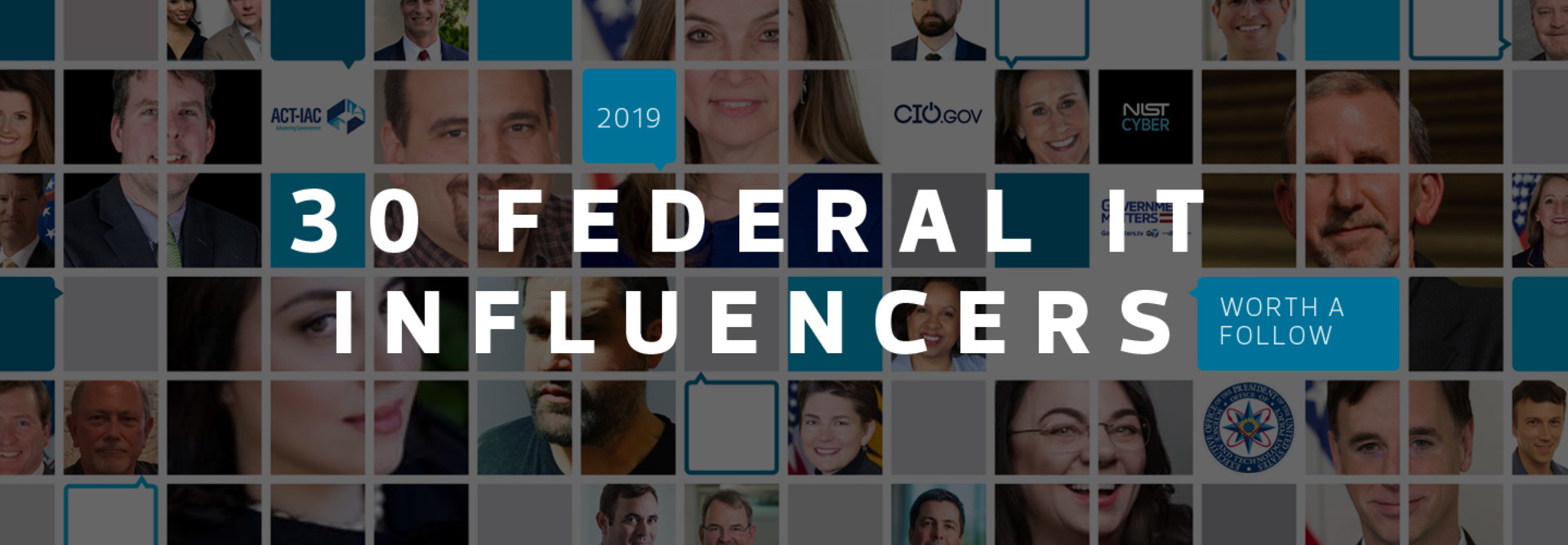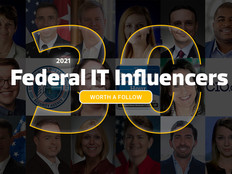30 Federal IT Influencers Worth a Follow in 2019
The federal IT community is vast, encompassing thousands of employees in government and industry, and at the same time incredibly tight-knit, with many of the same faces appearing at conferences throughout the year.
As federal agencies continue to modernize their technology, there is more ferment than ever. To stay on top of the latest trends and separate true insight from mere conventional wisdom, it’s useful to cultivate a list of trusted and knowledgeable voices to follow. But where is a federal IT pro to start?
To help government technology professionals stay in the loop, FedTech has sorted through the most influential federal IT voices that the web has to offer. In response to an evolving industry and every-changing technology, we’ve adopted a new approach to keeping track of the industry’s thought leaders, and have transformed our Must-Read Federal IT Blogger List into an “influencer list” that covers not just bloggers, but also Twitter personalities, podcasts, LinkedIn pros and those who use their social channels to get the word out
So, without further ado, here are 30 federal IT influencers who we hope will be your go-to for keeping track of the latest in government technology — and if you’re on the list, spread the news and grab our IT influencer cover image for your Twitter page!
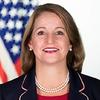
As the Federal CIO, Kent leads and coordinates federal IT across the government and is a must-follow on Twitter for her take on updates to policy and her active promotion of agency CIOs’ modernization efforts. Before coming to government, Kent spent her career in the private sector, but she has been enthusiastically embraced by the federal IT community for her passion for modernization and knowledge of the technical aspects of the job.

A fellow at the National Institute of Standards and Technology, Ross has been at NIST for nearly a quarter of a century and is one of the agency’s pre-eminent cybersecurity experts, having helped lead the development of the agency’s widely followed Cybersecurity Framework. For those looking to stay on top of cybersecurity news and updates from NIST in particular, Ross is a go-to.

Scott, the former Federal CIO who preceded Kent, remains a sought-after speaker and adviser on federal IT modernization. He offers a unique perspective and eagerly promotes continuing efforts around modernization, especially on LinkedIn.

As the deputy director for management at the Office of Management and Budget, Weichert, along with Kent, is one of the key officials in charge of carrying out the President’s Management Agenda, which focuses on IT modernization; data, accountability and transparency; and creating a federal workforce for the 21st century. Weichert provides a regular stream of Twitter updates on the government’s modernization efforts, especially around the workforce and the Technology Modernization Fund.

The American Council for Technology-Industry Advisory Council is one of the premier organizations for bringing together government IT leaders and the industry players who serve and collaborate with them. The organization’s social feeds regularly promote its events, which serve as excellent thought leadership gatherings.

Forcepoint’s cybersecurity podcast says it all in its name. The cybersecurity vendor’s podcast aims to be a weekly digest of what’s going on globally and gets to the point by keeping its length to about 20 minutes or less. In a little more than a year, the podcast has already attracted some big names, including Chris Krebs, director of the Cybersecurity and Infrastructure Security Agency; former Agriculture Department Deputy CIO Joyce Hunter; and Larry Ponemon, chairman and founder of the Ponemon Institute.

An institution for government policy and IT wonks as much as “Meet the Press” is for politicos, Government Matters TV regularly hosts top federal IT leaders for discussion on the latest news and trends in the community. To hear what they have to stay, be sure to stay tuned.

As president of U.S. regulated industries at Microsoft, Townes-Whitley is the tech giant’s point person for government affairs. She dives deep, not just into how the company’s cloud and artificial intelligence solutions can help agencies, but also into technology’s impact on the environment and how to close the digital divide.

Cordell covers federal contracting, defense and cybersecurity for the Washington Business Journal. He previously served as the senior technology reporter for FedScoop and workforce and acquisitions reporter at Federal Times. Follow him for scoops and news updates on defense contractors and systems integrators.

Executive editor of the government technology website Nextgov, Konkel sits at the intersection of government, politics and technology. His Twitter feed is a running commentary on the latest news and controversies at that junction.

A career civil servant, Davie has been with the General Services Administration for three decades and currently serves as the director of GSA’s program management office for creating and delivering shared services for human resources. She previously was assistant commissioner in the GSA’s Federal Acquisition Service Office of Information Technology Category and is a major proponent of shared services and the GSA’s work to help modernize government.

Suder is founder and president of the Advanced Technology Academic Research Center, a nonprofit designed to foster collaboration and professional development in government technology. He is also the founder and president of Apcerto, a mobile DevSecOps company. Suder regularly curates updates on emerging technologies, which he posts to his Twitter feed, and is a key government IT player to follow.
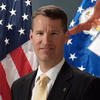
Marion serves as deputy CIO of the Air Force and is one of the leaders pushing the service to embrace digital transformation. If you want to stay on top of the Defense Department’s IT modernization efforts, Marion’s Twitter feed is a great place to start.

Schneider serves as the editor in chief of both FCW and GCN, two of the most venerable publications in the world of government IT. He regularly moderates panels of influential IT leaders at events and is a key player in the federal IT media landscape.

Goldy Kamali is founder and CEO of Scoop News Group (which includes CyberScoop, FedScoop, WorkScoop, StateScoop and EdScoop) and is a federal IT maven. Her organization works closely with the Federal CIO’s office and puts on some of the biggest events in the community each year.

Shive, CIO of the General Services Administration and former CIO of Washington, D.C., brings a wealth of government IT experience to a key role. He is a major evangelist for the GSA’s work and government service in general.

Miller is the executive editor of Federal News Network, is one of the most well-connected and respected federal IT journalists on the beat. Follow his Twitter feed for regular scoops, especially on personnel moves.
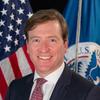
Krebs, the director of the Department of Homeland Security’s Cybersecurity and Infrastructure Security Agency, is one of the most prominent cybersecurity officials in government. He regularly offers his take on cybersecurity trends, issues warnings about cyberthreats and opines about whether pineapple belongs on pizza (he firmly believes it should be there).

As a principal director at Accenture Federal Services, McClure has a wide-ranging perspective on transformational IT initiatives across the government. He is extremely active on LinkedIn and is a well-respected independent expert on digital transformation.

Government IT industry analysts are few and far between, which makes McCarthy, the research director for IDC Government Insights, a rare find. Active on LinkedIn, McCarthy is a font of knowledge and data about government IT trends.

Mahan is the acting director of the GSA’s Federal Risk and Authorization Management Program (FedRAMP), and previously served as the program’s first evangelist. Follow her to stay informed about cloud computing and cloud security trends across government.

Herman is public sector director of Twilio, a cloud communications Platform as a Service company, and previously served as the head of the GSA’s Emerging Citizen Technology program office. There, he encouraged agencies to expand their use of robotic process automation, artificial intelligence, blockchain, virtual reality and other innovative technologies. Herman is still an active promoter of the government’s use of cloud and AI.
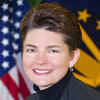
Roat, CIO of the Small Business Administration, has long been a leader in federal IT and lauded for her efforts to make SBA a leader in government cloud adoption. Her personality regularly shines through on her Twitter feed, where she calls out good and bad examples of customer service and celebrates her team.
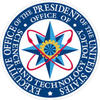
OSTP leads interagency science and technology policy coordination efforts and provides scientific and technical analysis and judgment to the president on key policy issues. For an official take on the White House’s scientific and technological priorities, look no further.

The National Institute of Standards and Technology’s cybersecurity programs “seek to enable greater development and application of practical, innovative security technologies and methodologies that enhance the country’s ability to address current and future computer and information security challenges.” The agency’s cyber-specific Twitter feed promotes industry cybersecurity events and best practices for managing cybersecurity risk.
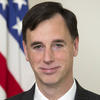
Joyce, the National Security Agency’s top cyber policy adviser, served for a stint as White House Cybersecurity Coordinator and is one of the most well-respected cybersecurity voices in government. Stay tuned to his Twitter feed for views on topics ranging from supply chain security to critical infrastructure.

Hosky is the cofounder of Hosky Communications, which owns and operates FedInsider, a major forum for federal IT events. She’s about as well connected as they come in the community.

Check out the CIO Council’s Twitter feed for an official view into its work in coordinating federal IT among agency CIOs, as well as for updates on the success stories from agency IT leaders. If you want to learn from your peers, here is a forum for keeping track of what they are up to.

Cutts, the administrator at U.S. Digital Service, has an active and lively Twitter feed that highlights government innovation. As a former Google exec, Cutts brings a Silicon Valley sensibility to government, both on his feed and in real life.

Formerly at the U.S. Digital Service, Worthington is now the CTO of the Department of Veterans Affairs, bringing an innovative approach to veteran-facing digital solutions. The down-to-earth air on Twitter helps him translate tech into layman’s terms.



